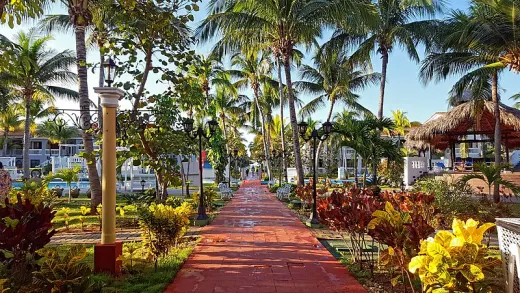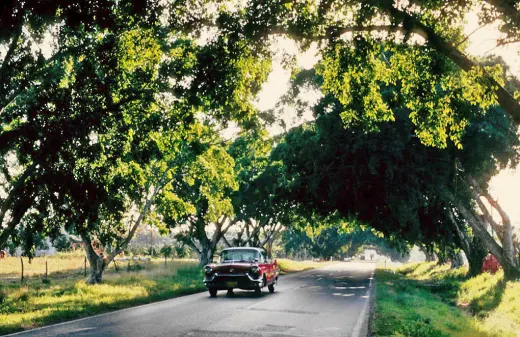
The story of Cuba & the West cannot be told without sugar. It was first discovered in India that refined sugar could be produced by pressing sugar cane juice. Muslims became proficient at the process, and spread refined cane sugar to Persia, then Egypt, until eventually reaching Europeans in the Iberian Peninsula.
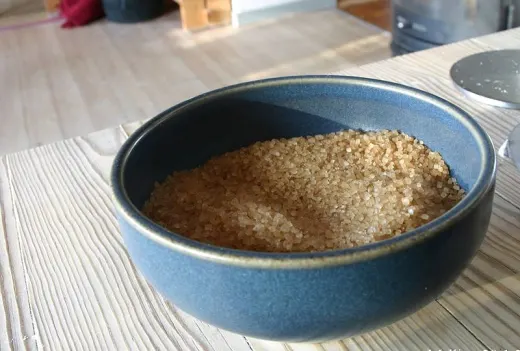
Spain & Portugal colonized the Madeira & Canary Islands off the northwest coast of Africa and began using slaves to cultivate sugar cane. European slaves were not plentiful, and indigenous slaves would either die off from disease contracted from colonizers or slip off into the woods. Colonizers quickly learned to use their guns, and later bribes of rum, to capture & enslave the plentiful people from the west coast of Africa. When Spain paid Columbus to explore westward in 1492, he brought sugar cane seeds and Africans.

Sugar was an expensive “spice” in Europe, available only to the wealthy & powerful. Queen Elizabeth I was a famed sweet tooth. Her father, Henry VIII, had sugar in his royal kitchen. Elizabeth became addicted. She was known to suck on sugar cubes. She even used sugar to clean her teeth (Europe did have honey, and sugar had previously been known to be medicinal). She had great tooth pain, and her teeth turned black and required pulling.

The primary driver of the demand for sugar among the colonizers were the introductions of coffee, tea, & chocolate to Europe.
Coffee was discovered in Yemen, and was introduced to Europe in 1526, when Hungary fought the Ottomans, who opened the first coffee houses.
Currently, chocolate is consumed mostly in candy form. Prior to the invention of chocolate bars in 1847 (and milk chocolate Hershey bars in 1878), chocolate was known as a beverage and was later used for pastries. Chocolate was plentiful among the Mayans and was drunk by all. The Aztecs even used cocoa beans as currency. Mexico was a colony of Spain, who were the first Europeans to “discover” chocolate by the mid-16th century. The Spanish then added cane sugar to sweeten the beverage, and the first chocolate house was opened in London, by a Frenchman, in 1657.
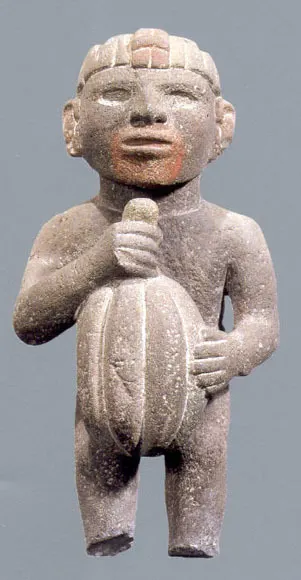
Tea had long been brewed in China, and was introduced to a Portuguese contingent in 1516. King Charles II of England married Portuguese Princess Catherine of Braganza, who popularized sweetened tea in Britain in the 1660’s. Between 1710-70, sugar consumption in Britain increased 5x. By the 18th century, sugar was available even to peasants in Europe.

While Portugal had established hundreds of sugar mills in Brazil by the mid-16th century, and was the world’s leading producer, Spain prioritized their monopoly on trade in the Caribbean until finally opening ports to international trade in Cuba in 1760. This led to massive infrastructure investments, in order to transport an increasing amount of sugar to the ports, which drew interest from American investors.
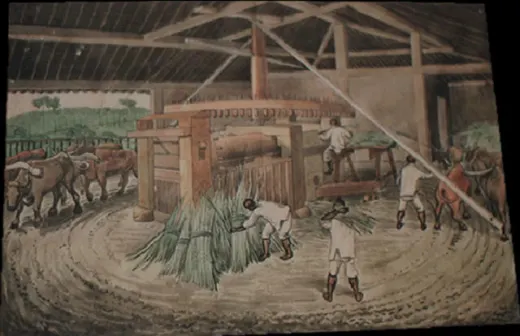
In 1820, Thomas Jefferson said that Cuba would represent a “most interesting addition” to the US. The Monroe Doctrine, which states that only the US controls the hemisphere, was introduced in a presidential speech in 1823, with specific invocation of Cuba.
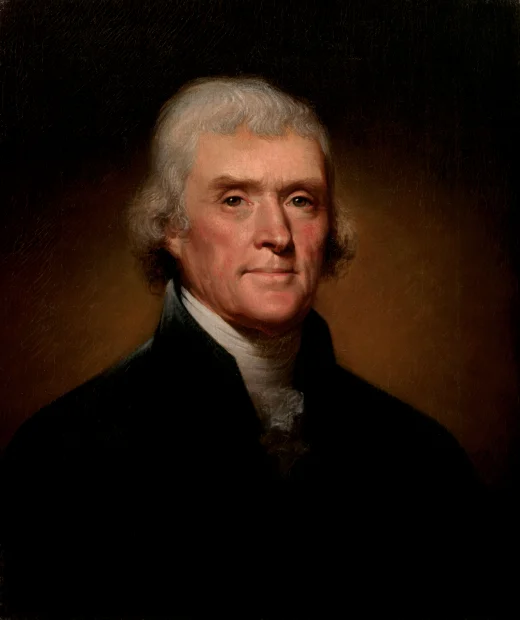
England had banned slavery in 1807 and pressured Spain to do likewise. Spain banned slavery domestically in 1811, as well as the sale of slaves in their colonies, but did not enforce the law. The threat of abolition, and a looming deadline from Spain, caused a boon in the slave trade in Cuba from 1816-20. The prospect of abolition also prompted greedy capitalist plantation owners in Cuba to initiate calls for US annexation, in order to maintain the practice of slavery on the island, as slavery was not abolished in the US until 1865.

Spain lost control of Mexico, Venezuela, Peru, Colombia, Bolivia, Chile, & Paraguay between 1808-33, who were backed by the UK (initially), the US, as well as Haiti (which was the first nation founded by former slaves following a successful revolt, when they defeated the French in 1804, yet were forced to pay France billions in reparations for 122 years for their own freedom). Spain was also beset by domestic unrest, culminating in the Carlist civil wars (1830-70). Spain finally abolished slavery in Cuba in 1868, and wars of independence commenced in Cuba & the Philippines. In response, Spain forced poor farmers -many of whom were former slaves- out of their homes and into cities. Spain also introduced concentration camps.

A newspaper rivalry in New York drove a nationwide campaign of yellow journalism which portrayed Spanish atrocities as even more diabolical than reality, demanding US action. In 1898, the USS Maine was sent to Cuba before mysteriously exploding & sinking. A Navy investigation would later show that heat caused a boiler to explode, which ignited the weapons cache and blew a hole in the ship. No matter, the sinking of the USS Maine was used to justify war with Spain. To appease anti-imperialists, the Teller Amendment was signed into law by President McKinley, which banned US annexation of Cuba, days before the US intervened in Cuba & the Philippines. The Spanish-American War was over before the year was out.
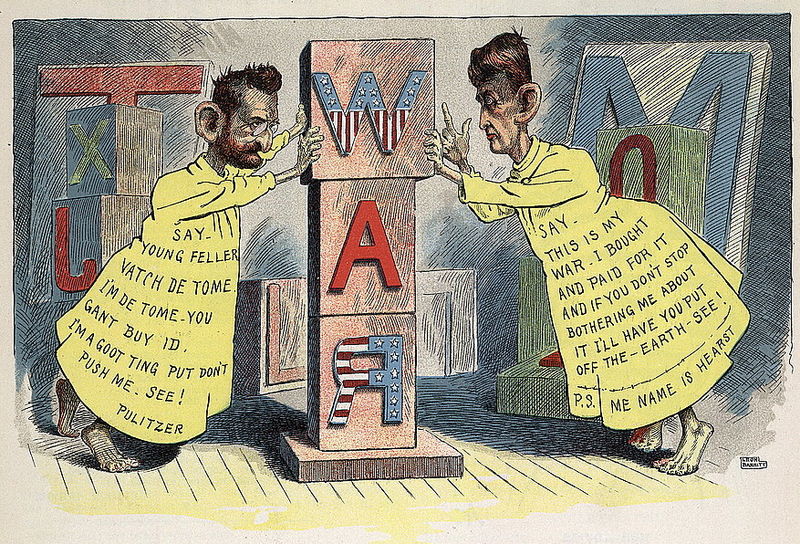
From Spain, the US gained control over the Philippines, Hawaii, Puerto Rico, Guam, the Marshall Islands… But given the Teller Amendment, the US could only maintain a military presence in Cuba, off & on until 1909. Puppets of US capital largely ruled Cuba until the Sergeants Revolt in 1933, when enlisted soldiers complaining of poor working conditions partnered with academics, laborers, & poor farmers. The Provisionary Revolutionary Government instituted an 8-hour work day, and a minimum wage for cane workers, as well as women’s suffrage.
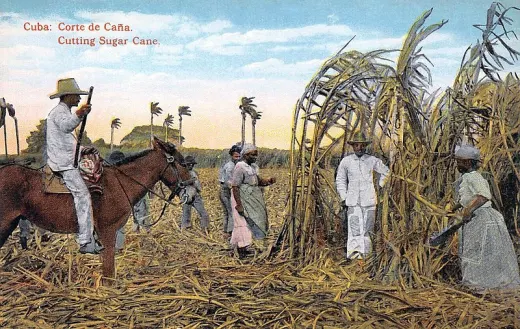
Fulgencio Batista appointed himself Chief of the Armed Forces, and was de-facto ruler of a five-member governing council, until his election as president in 1940. The anti-communist Batista was endorsed by the Communist Party in exchange for his legalizing the party. The constitution forbade consecutive presidential terms, and Batista fled to Florida in 1944 following his term in office. The US remained heavily interested & invested in Cuba – in sugar, in oil, and in minerals.
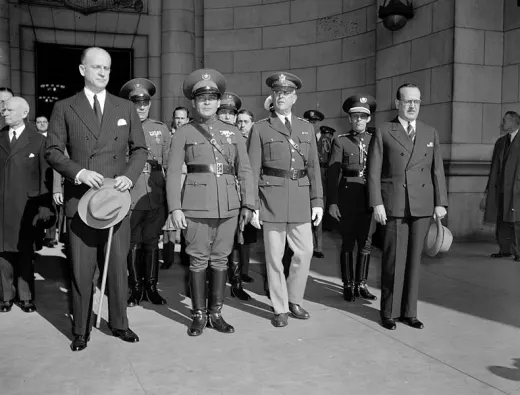
Lucky Luciano was sentenced to 30-50 years in federal prison for prostitution-related charges in 1936. During WWII, Luciano was offered freedom at the conclusion of the war, if Nazis were prevented from sabotaging the ports in NY – given mafia involvement in the longshoremen’s union. In 1946, Luciano, Meyer Lansky, and other mafia bosses gathered at the Hotel Nacional for the Havana Convention, with Frank Sinatra as entertainment. The mobsters operated casinos & brothels in Cuba, and were in partnership with Batista. They brought in Sinatra & the Rat Pack to drive tourism to their establishments. They hosted the Kennedy brothers as well.
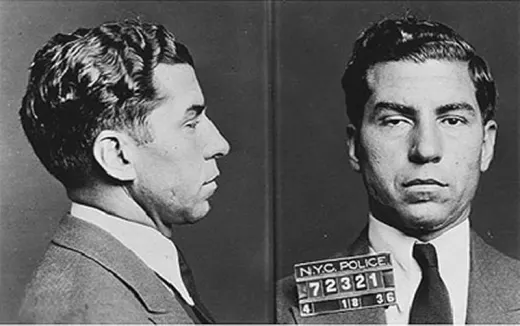
Batista returned to run for president in 1952. He was running a distant third in the polls, and three months prior to the election declared himself leader in a military-backed coup before cancelling elections.
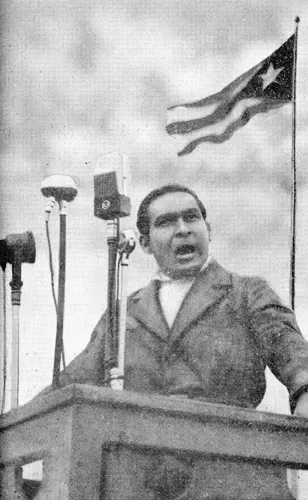
This prompted the Communist Revolution (1953-59) which was led by the Castro brothers & Che Guevara. Under communist rule, Cuba nationalized industry, including (largely US-owned) sugar & oil. This allowed them to fund robust social welfare programs for the people, for human rights such as healthcare, education, food, & housing.

The capitalist super power could not abide this example. President Eisenhower began “A Program of Covert Action Against the Castro Regime” in 1960. Within months of President Kennedy taking office in 1961, the failed Bay of Pigs invasion was attempted (documents were declassified in 2011 which showed the CIA knew a small-scale invasion would fail). Later that year, Kennedy authorized CIA Project Mongoose to remove communists from power in Cuba.
1962 was an historic year in US/Cuba relations. The year would bring the Cuban Missile Crisis – the closest humanity has yet come to an extinction-level event. That same year, the trade embargo was placed upon Cuba, in which the US fines any country, company, or bank who does business with Cuba. Also, CIA Operation Northwoods was launched, which included plans to bomb civilians in Miami, sink boats of Cuban refugees, and attempt to frame the communist Castro regime in order to prompt full invasion. Operation Bingo was a plot to frame Cuba for a nonexistent attack on American forces in Guantanamo Bay. Operation Dirty Trick was a plan to create false evidence and blame Cuba rather than NASA, should the Mercury space flight, with John Glenn, crash.

This caused a change of heart for the previously Cold Warring, domino-theorizing Kennedy, who rejected Operation Northwoods & established back-channel communications with Soviet leader Kruschev, whom Kennedy planned to meet after a brief trip to Dallas in 1963, as well as with Fidel Castro. Kennedy determined that he would put an to end the Cold War and break the CIA “into a thousand pieces.” For this, the CIA regarded Kennedy as a treasonous traitor, and Kennedy was assassinated, we are told by Lee Harvey Oswald, who was a CIA double-agent serving in the Soviet Union, but apparently fell out of favor and was given a job along Kennedy’s parade route just before the assassination. Within weeks, former President Truman (who created the CIA in 1947) wrote an op-ed in the Washington Post, warning that the CIA had gotten out of control.
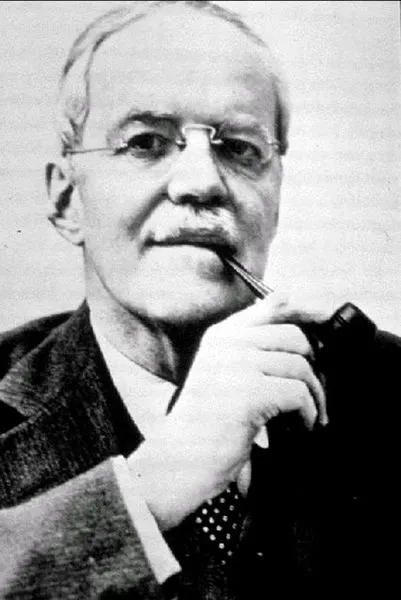
With Kennedy out of the picture (and eventually RFK, MLK, Malcom X, Fred Hampton…), the CIA continued business as usual in Cuba, including biological and ecological warfare. In 1962, the DIA had paid a Canadian man $5k to infect turkeys in Cuba with Newcastle disease. In 1971, the CIA caused an outbreak of swine fever which resulted in the slaughter of over 500k pigs in Cuba. In 1976, Flight 445 was bombed by CIA assets, killing 73. In 1981, the CIA infected Cubans with dengue fever, killing 158, and the US refused to sell Cuba pesticides to rid the island of the virus. In 2010, USAID funded an entire fake Twitter for Cuba, intended to sow discord and turn public sentiment against the communist government. In 2016, the US accused Cuba of using sonic weaponry against diplomats which caused headaches & nausea (Havana syndrome), but turned out to merely be crickets. By the time Fidel Castro died of natural causes in 2016, the CIA had planned or attempted at least 638 plots to assassinate or disorient (to embarrass & discredit) the Cuban leader.
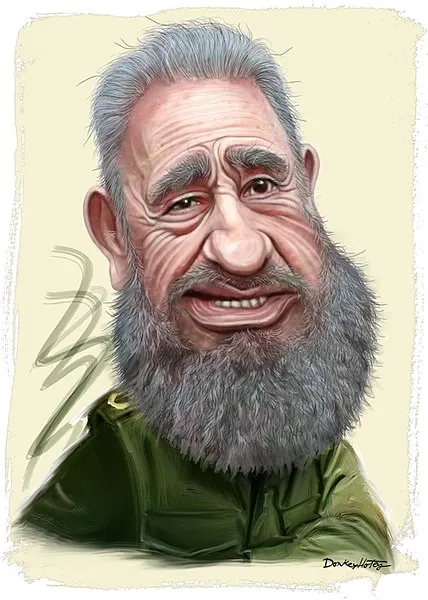
Following 9/11, and approved by President Bush, Nancy Pelosi, and others, the CIA (including later CIA Director Gina Haspel) began torturing mostly-innocent Muslim detainees at GITMO prison, located in Guantanamo Bay, Cuba (Castro refused to cash rent checks sent by the US). President Obama moved to “normalize” trade relations with Cuba, and allowed travel on a limited basis – a significant step toward peace. President Trump doubled down on the embargo, and added hundreds of additional tariffs. Candidate Biden had promised to revert to Obama-era Cuba policy. Once in office, President Biden said that he was not Obama, and needed time to consider, before finally siding with Trump on Cuba.
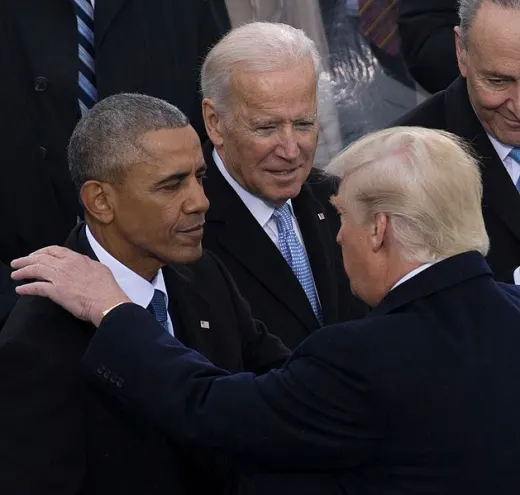
When Covid arrived, Cuba sent doctors to areas of the world hardest hit by the virus, as they often do. Cuba has thus far been the only Latin American country to produce a vaccine – two, in fact (along with a lung cancer vaccine). Cubans have a longer life expectancy than Americans. However, the embargo has made syringes difficult to attain. This has prevented Cuba from exporting more vaccines to nations without access to the for-profit Covaxx program. While also, at the prompting of Bill Gates, the US kept patent protections in place, preventing access and authority for poor nations (nations recovering from exploitation) to produce generic vaccines for themselves.
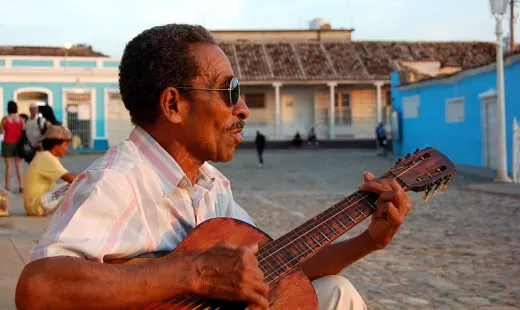
Given the 60 year-long embargo, Cuba has been burdened by the US with economic hardship, inflation, and food & medical shortages. This prompted small protests of hundreds of Cubans, which were dwarfed by pro-(communist) revolution demonstrations. Obedient US corporate media hyped the smaller protests, completely ignored the much larger, pro-revolution rallies (along with protests in Haiti, Columbia, Peru…). And led by Miami Mayor Francis Suarez, scores of US politicians, pundits, capitalists, and war-mongers joined in unison calling for humanitarian air strikes, to invade Cuba with freedom-toting ground troops, to liberate the Cuban people with increased economic strangulation and medical sabotage even during a literal pandemic. The famously Progressive AOC even joined in on the anti-communist fun, tweeting in support of #SOSCuba, while failing to even mention the embargo, before later deleting the embarrassing, imperialist tweets.

In America, due to corporate capture of our government & media, even the furthest left politicians are imperialist, anti-communist servants of capital. And such is the nature of Cuba & the West.
